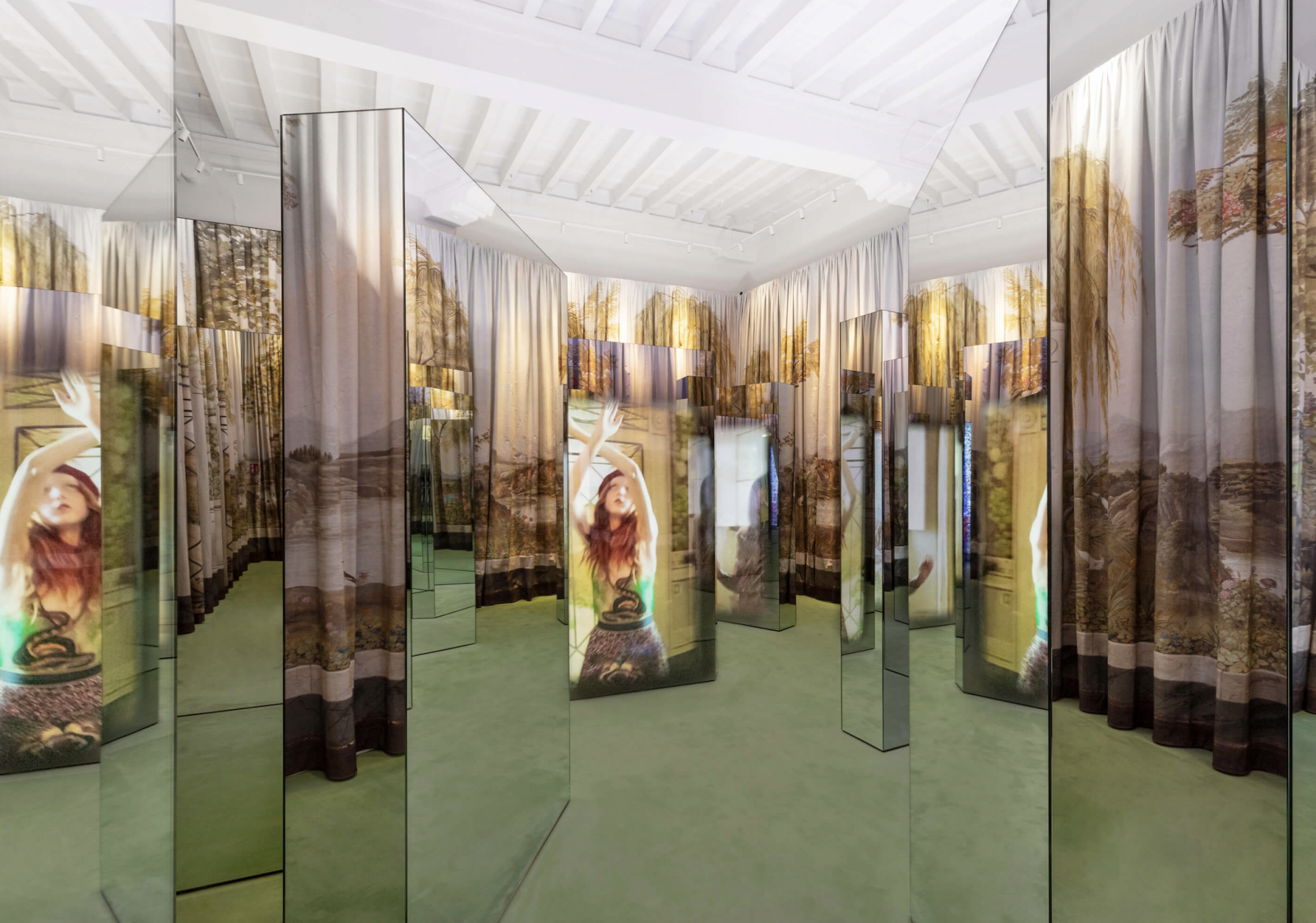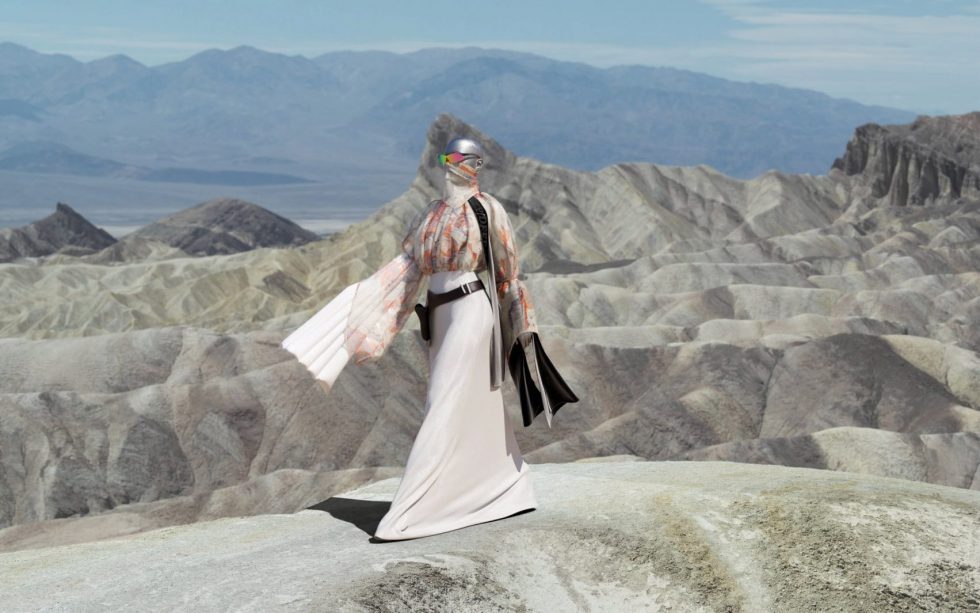
Interest in virtual fashion is at a high, with a growing number of consumers looking to entirely-digital offerings as the way forward at a time when consumers can seamlessly navigate between URL and IRL. With enduring growth in the gaming market and with the rise of the metaverse (i.e., shared virtual environments that people can access via the internet) in mind, brands are increasingly looking to virtual fashion to meet consumers where they are. And the results are coming in the form of in-game apparel and accessories whether that be Balenciaga Fortnite gear or branded wares created in collaboration with Roblox, as well as digitally-generated outfits that can be filtered into a consumer’s images and displayed on social media platforms like Instagram or TikTok.
The previously prominent line between “real” – aka tangible – clothing and digital versions, and distinctions in the value of these two types of offerings is swiftly evolving in real time thanks to new developments that are coming from traditional fashion brands and digitally-native ones, alike. All the while, virtual fashion – namely, fashion that is designed and marketed exclusively for online avatars – is posing novel legal questions for fashion and luxury goods companies, including from a brand enforcement perspective, and also raising plenty of eyebrows in terms of its status as the next frontier in fashion, as it is readily being touted as capable of “overtaking [the] physical,” according to the AFP.
It may be early days when it comes to the adoption of entirely virtual fashion offerings by mass market consumers, but the attitudes of younger consumers – and the amount of time that they spend online – seems to indicate that a larger shift is underway, and brands will want to pay attention. In a report this summer, for instance, website-building and e-commerce platform Squarespace found that of the 2,000 U.S. consumers that it surveyed, no shortage saw the importance of how they appear online versus in person. Specifically, Squarespace revealed that 60 percent of Gen Z (those born between 1997 and 2012) and 62 percent of Millennials (born between the early 1980s to the mid-1990s) believe “how you present yourself online is more important than how you present yourself in person.”
In a further nod to the emphasis placed on digital appearance, something that has undoubtedly been advanced thanks to the dominant role that social media, including image-centric apps like Instagram, plays, 86 percent of Gen Z and 79 percent of Millennials said in connection with the same survey that they “look people up online before meeting them for the first time,” a big jump up from the 65 percent of Gen X and 44 percent of Baby Boomers who do the same thing.

The rate at which younger demographics, especially Gen Z, are buying into the virtual fashion space makes sense given that in much the same way as they have grown up with access to hyper-fast and super-cheap fast fashion, they have also been plugged into social media from a much younger age than any other generation. Add to that, the fact that the virtual landscape is such that digitally-connected consumers are not only part of powerful online communities, Kelly McDonald, the CEO and co-founder of predictive data platform Kyndoo, asserts that they “have entire relationships that are primarily, if not fully, based online.” This raises the bar significantly when it comes to curating and investing in online personas.
And while “many parents may scratch their heads at paying real money to accessorize an avatar,” the AP reported in September that Gen Z consumers have “long been prepped for this evolution, [having] run through physical streets and parks to intercept and capture Pokemon Go characters” back in 2016, and more recently, spending much of their pandemic lockdown period “playing with real-world friends over gaming platforms like Roblox, [where] dressing up avatars is old hat.”
With such a level of familiarity with gaming and in-game purchases aimed at enhancing the appearance of their digital personas, Roblox’s vice president of branded partnerships Christina Wootton says that Gen Z consumers “sometimes see virtual products as more valuable than physical products.” This is often the case on platforms like Roblox, “where it is all about storytelling and self-expression, [and where] so many people who come together and connect with their friends, and want to represent their digital selves through fashion” while doing so.
The user and dollar figures at play speak to this.
As a whole, the market for in-game “skins” – which enable video game players to alter the appearance of their characters – is predicted to reach nearly $50 billion by the end of 2022, the Guardian reported this spring, noting that Epic Games’ Fortnite brought in more than $9 billion total for Epic in 2018 and 2019, with such revenues driven largely by in-game purchases by its more-than 350 million global users for things like skins.
To put skins sales in perspective, Epic revealed that it sold 3.3 million NFL-branded skins between November and December 2020, generating sales of approximately $50 million. Meanwhile, Roblox – which boasted over 43.2 million daily active users as of Q2, more than half of which were under age 13 – is posting growth. The California-based gaming platform revealed this summer that its revenue for the 3-month period ending on June 30 increased 127 percent on a year-over-year basis to $454.1 million, with such results fueled in larger part “by the millions of people around the globe who want to connect and share new experiences every day on Roblox.”

At least some of the millions of people who use Roblox were eager to accessorize their characters with Gucci offerings, including branded handbags, eyewear, and even virtual perfume that could be purchased with Robux from the virtual store that came as part of the platform’s tie-up with the Italian fashion brand this spring. (As TFL reported at the time, most of the Gucci goods initially sold for around 475 Robux – the equivalent of $5.50. Some of the initially inexpensive “limited” edition purses, however, were being resold on Roblox for much more … like $4,115, which is even more than the $3,400 retail value assigned to tangible versions of the Gucci bags. Overall, Gucci reportedly sold upwards of 4 million virtual items in connection with the Roblox collab.)
Ultimately, the field of virtual fashion is in its nascency, which means that it is rife with opportunities for brands that are looking to connect with the next generation of luxury buyers. At the same time, this rising market brings with it no shortage of legal issues that brands should consider, according to UDL Intellectual Property’s Alison Cole, who says that “wherever a valuable market appears, those seeking to take advantage will follow, and often the law takes a while to catch up.”
With that in mind, she claims that the following questions are worth considering: Who owns the rights in a digital garment? If a design exists virtually, but is copied in reality, will that be an infringement? What about the other way around? And how can digital infringements be ‘seized’? When considering fashion events, or gaming events that feature fashion designs, who will own the rights to the video and/or audio recording of the event when the event was created rather than staged? What about the image rights of those individuals who appear in the event if the models are avatars?


Leave a Reply